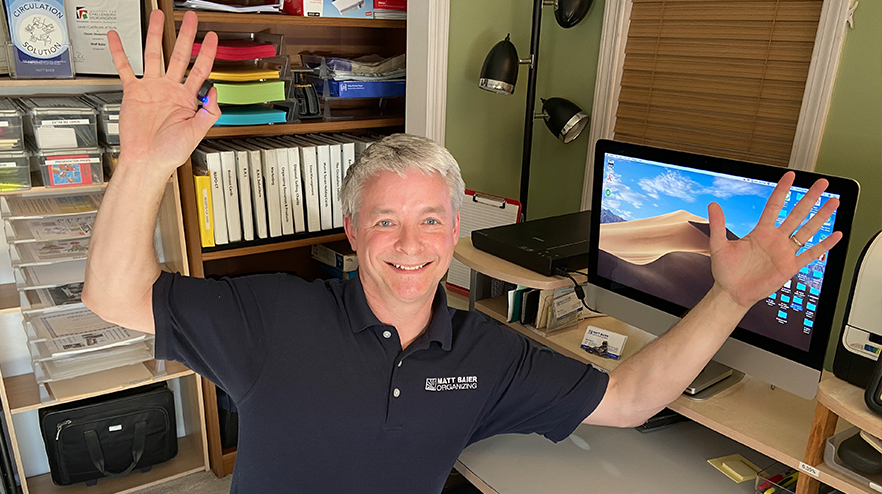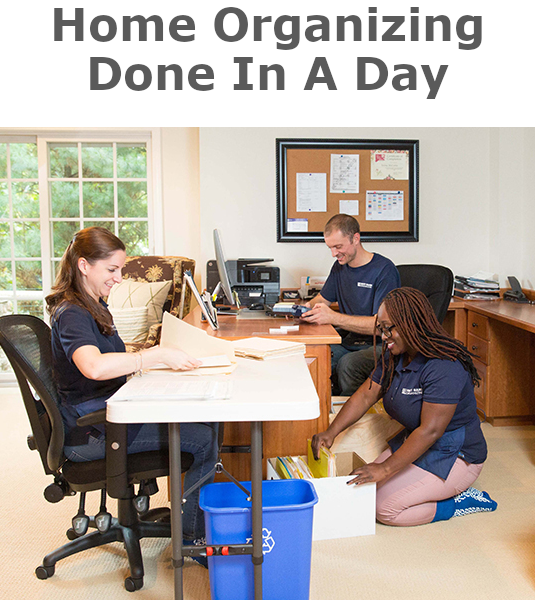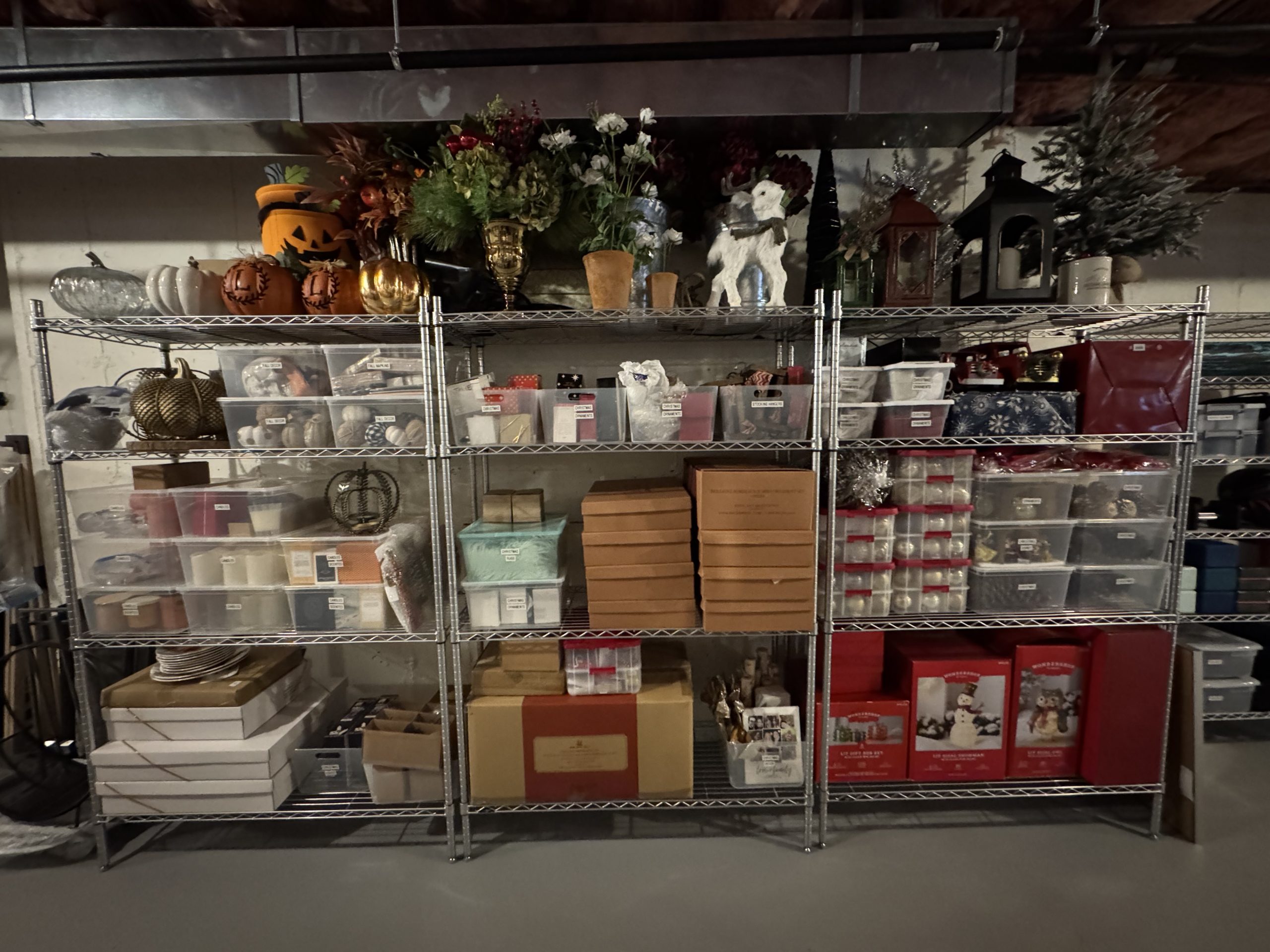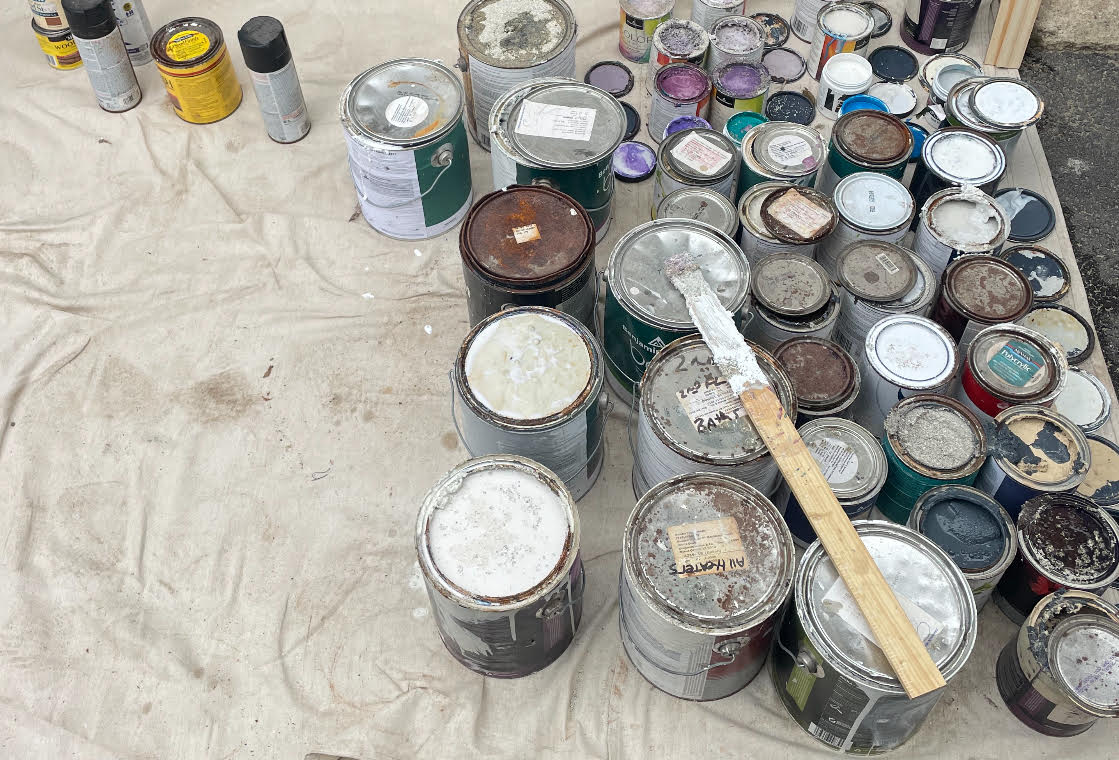There’s one thing I’m sure I don’t have to tell you about finding more home office space. You won’t find it by discovering a door to a secret room.You also won’t find it by unloading one major category. That big category has been important enough to keep. It won’t suddenly become so unimportant that it can all go. So space has to come from a series of small space gains that add up. Here are 10 tips to help.
1. Obsolete Material
Take a good look at bins or drawers of things like software and computer supplies. We keep this stuff, just in case, but it’s amazing how quickly it gets outdated and unnecessary. This shoe of computer supplies used to fill up this bin. Nice space gain.
2. File cabinet
If you have more than two file drawers, and you’t have a business, you may have a file cabinet eating up precious space. See my series on paper management to find a safe easy way to discard and archive excess paper.
3. Horizontal items
Datebooks, large check binders and other big items that need to lay flat eat up a lot of space. Wherever possible look for vertical solutions to save home office space.
4. Drawer limitations
Setting your drawers with a couple limitations will actually maximize their space value. One such limitation is to never store flat items inside, because you won’t be able to instantly see what’s underneath. Another limitation is to resist the need to pack your drawers. There is value to the viewing space, even though it is open.
5. Keepsakes remote
I understand the need to collect incoming artwork and schoolwork, but I wouldn’t attempt to curate it as you go. A simple portfolio fits all sizes. Children’s and adults keepsakes can take up a lot of space, so I recommend a more remote storage to free up home office space.
6. Displays on walls and shelves
So if you are using keepsakes for display, then I recommend storing them on shelves or hanging them on the wall. Same goes for all display items. I know there is a school of thought that it’s good to have a photo of your family in front of you so you remember who you are working so hard for. OK, but I question whether you really need that reminder or if it’s really more of a distraction. My argument would be, with fewer distractions, you have greater focus, so that you can finish work earlier and get back to your live family
7. File by category
Here’s a small one that adds up. You can fit more files in your file cabinet, if you use extra capacity hanging folders. Too many hooks can pack your file drawer.
8. Owners manuals
I don’t recommend wasting file space on owners manuals. For starters, they’re all available digitally online, so you could toss them. Take a look. But if you do keep the paper manuals, bear in mind that the odds of needing them are remote. Remote need merits remote location. Keep them in a simple drawer and don’t over-organize.
9. Receipts
The more intentional you are with receipts, the more space you can save. I can identify 4 good reasons to keep receipts. 1 obviously is for taxes, 2 is for items you may want to return, 3 is for capital improvements, and 4 is for insurance purposes. Jewelry, art, furniture, that you want a record for home insurance. I recommend a file for each, however I like to keep a file jacket for the tax receipts easily accessible, as I’m adding to it all the time.
10. Reliable back up supplies
Storing reliably findable back-up supplies ensures that you have more space where you need it most. How? You will be more inclined to keep a bare minimum of supplies at your desk surface if you trust that you can find the back up supplies you need quickly.
Again, individually these things may sound insignificant, but collectively they create significant space in your home office. That’s important because the most valuable thing in your office space, is the space itself.
Please Share With Your Community
Related Posts
Testimonials
What some of our clients are saying
Imagine An Organized Home
















